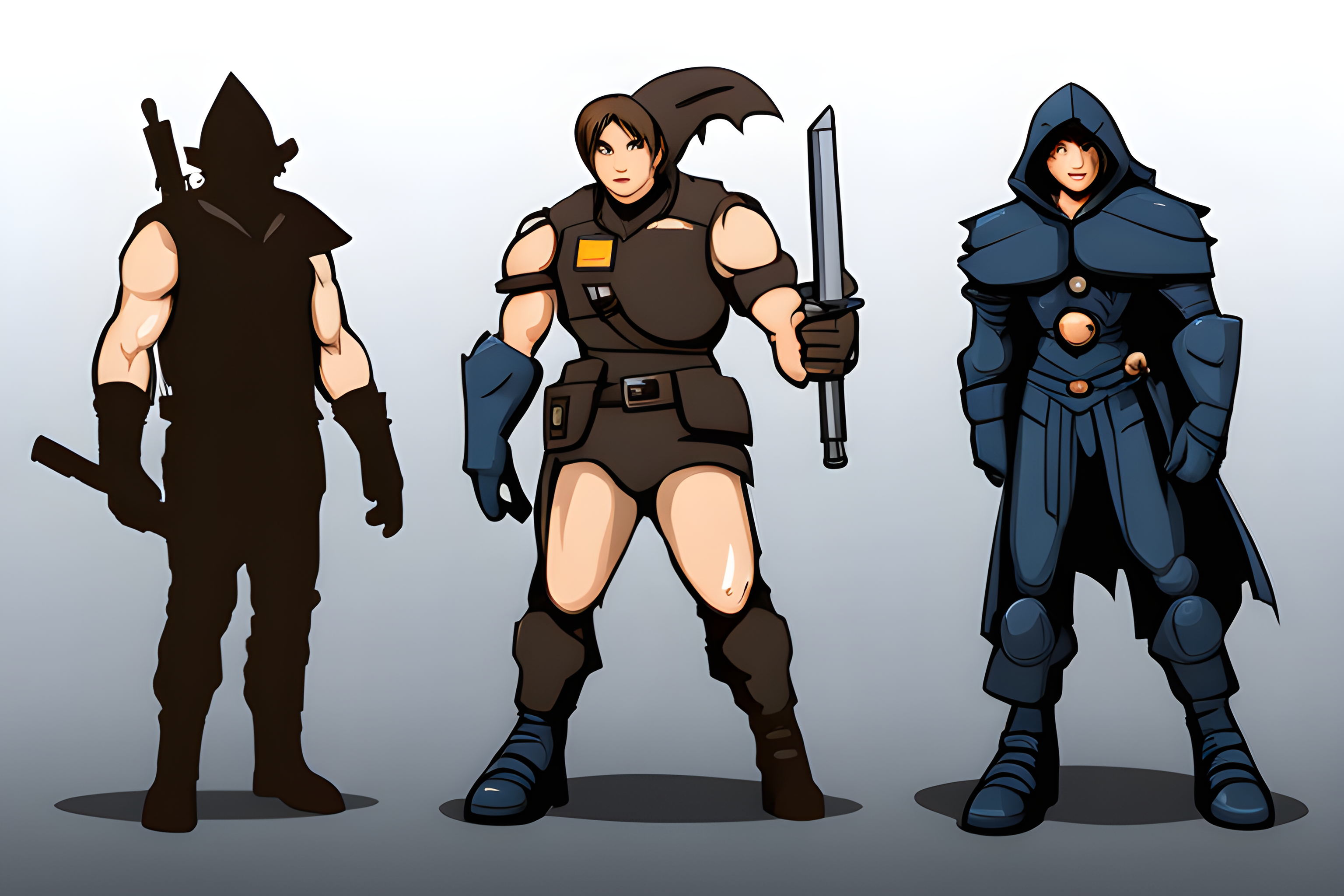Fashion Forward: Enhancing User Experience with Custom 3D Models

I. Introduction
The world of fashion and gaming is coming together in a remarkable way, creating new and exciting opportunities for both industries. Fashion is no longer limited to the physical realm; it has made its way into the virtual space of gaming. This convergence has given rise to a trend where players can express their personal style through fashion customization within video games. By integrating custom 3D models, developers are enhancing the user experience and creating a more immersive gaming environment.
User experience plays a crucial role in the success of any video game. It encompasses everything from the gameplay mechanics to the visual appeal of the game world. Custom 3D models have emerged as a powerful tool in enhancing the user experience. These models allow players to personalize their in-game avatars with unique clothing and accessories, fostering a deeper sense of connection and engagement with the game.
II. Intersection of Identity and Gaming Experience
Fashion has long been a means of self-expression, allowing individuals to showcase their personality and preferences. Similarly, customization options in gaming provide players with the freedom to create characters that reflect their own identity. By combining fashion and customization, players can truly embody their desired personas and express their unique style within the virtual world.
Custom 3D models take personalization to the next level by offering players an extensive range of fashion choices. From hairstyles to clothing options, players can meticulously craft their in-game avatars to resemble their ideal representations. This level of customization empowers players to become active participants in shaping their gaming experiences and fosters a stronger connection between the player and the game world. As the younger generation today have been spending more and more time in the gaming world, it is imperative for them to showcase their personality in the virtual world too and what can be better than fashion in games through 3D modeling!
III. Fashion and Gaming: The Perfect Blend
Fashion has become a significant influence in the gaming industry, revolutionizing the way games are designed and experienced. Developers are recognizing the impact of fashion on player engagement and are incorporating fashion elements into their games. The inclusion of fashionable outfits, accessories, and virtual clothing has become a driving force behind the success of many gaming titles.
Fashion customization adds a layer of depth and personalization to gaming experiences. Players can experiment with different styles, mix and match outfits, and create looks that resonate with their personal taste. This level of customization allows players to create a virtual identity that aligns with their individual preferences, resulting in a more immersive and enjoyable gaming experience.
The concept of virtual fashion has gained immense popularity in recent years. Virtual clothing brands and designers are emerging, catering specifically to the gaming community. Players now have access to a wide range of fashionable virtual garments that can be acquired and showcased within the game. This trend has significantly increased user engagement and created new avenues for collaboration between fashion brands and game developers.
IV. Elevating Gaming Aesthetics with Fashion and 3D Models
Gaming aesthetics play a crucial role in capturing players' attention and immersing them in visually stunning game worlds. When players are presented with aesthetically pleasing environments, it enhances their overall gaming experience and makes it more captivating and memorable. Visual appeal is a key factor in attracting and retaining players, and fashion, along with custom 3D models, contributes significantly to the creation of visually striking game aesthetics.
Fashion and custom 3D models provide game developers with the tools they need to create visually captivating game environments. These elements work together to enhance the visual appeal and immersion of the game. Detailed and realistic virtual garments, combined with meticulously designed character models, contribute to the overall aesthetic quality of the game.
Fashion in games allows developers to incorporate a wide range of designs and styles into the virtual world. Whether it's historical costumes, futuristic outfits, or fantasy-inspired attire, fashion adds a layer of visual interest and diversity to the game. The attention to detail in the design of these virtual garments, such as intricate patterns, textures, and accessories, adds depth and richness to the game's visuals.
Custom 3D models further enhance the visual quality of the game. By creating highly detailed and realistic character models, developers can bring the game's world to life. These models are carefully designed to ensure that the characters' appearance aligns with the game's artistic vision and setting. From facial features and body proportions to clothing and accessories, every aspect of the character is crafted to create a visually stunning and cohesive experience.
By incorporating fashion and custom 3D models, game developers have the opportunity to create visually stunning game environments that leave a lasting impression on players. These elements contribute to the overall aesthetic quality of the game and play a vital role in attracting and retaining players.

V. Enhancing User Experience through Fashion Customization
Enhancing the user experience is a crucial aspect of game development, and fashion customization plays a significant role in achieving that goal. When players have the ability to dress their avatars in outfits that align with their personal style and preferences, it brings the player closer to the virtual world they inhabit. This level of customization fosters a sense of ownership and investment, as the players can customize their style with specific wearables and accessories.
Custom 3D models play a key role in enabling fashion customization within games. By providing players with an extensive range of fashion options, developers allow them to curate their avatars' appearance and create a unique identity within the gaming realm. Whether it's choosing hairstyles, clothing, accessories, or even facial features, the customization possibilities are vast.
The ability to showcase personal style and identity through fashion customization fosters a sense of self-expression. Players can reflect their individuality and stand out in multiplayer environments where multiple avatars coexist. This not only allows players to express their uniqueness but also enhances the social dynamics within the game. Seeing different avatars with distinct styles and fashion choices adds variety and visual interest to the overall gaming experience.
In multiplayer games, fashion customization becomes even more impactful. When players encounter others with different fashion choices, it sparks curiosity and conversation. It opens up opportunities for interaction and can serve as a starting point for forming connections with other players. The ability to stand out visually in a crowded gaming world helps players feel recognized and appreciated for their creativity and personal style.
Fashion customization also contributes to the overall enjoyment of the game. When players can dress their avatars in outfits that resonate with their personal taste, it creates a sense of satisfaction and accomplishment. It becomes a form of self-reward, allowing players to feel a sense of achievement as they create and refine their virtual identities.
Moreover, fashion customization has a lasting impact on player engagement. When players have the freedom to express themselves through their avatars' appearance, it adds a layer of personal attachment to the game. They become emotionally invested in their avatars and the virtual world, driving them to spend more time in the game and explore all the possibilities it offers. It is a win- win for everyone!
VI. The Power of Custom 3D Models
Custom 3D models play a crucial role in the world of fashion customization in gaming. They serve as the foundation for creating virtual clothing and accessories that players can use to adorn their characters. With their ability to enhance realism and visual appeal, custom 3D models play a pivotal role in creating an immersive and visually captivating gaming experience for fashion-conscious players.
One of the key advantages of utilizing custom 3D models for fashion in games is the vast range of design possibilities they offer. These models provide developers with the creative freedom to design unique and visually stunning outfits that capture the attention of players. Whether it's creating elaborate costumes, futuristic apparel, or historically inspired attire, custom 3D models allow for endless design options, enabling developers to cater to diverse player preferences.
Additionally, custom 3D models can be optimized for different devices and platforms, ensuring a seamless integration into the game. Game developers can tailor the models to specific hardware specifications, optimizing their performance and visual fidelity. This ensures that players on different devices, such as PCs, consoles, or mobile devices, can enjoy the fashion customization features without compromising on the overall gaming experience.
Moreover, custom 3D models facilitate easy updates and additions to the game's fashion offerings. Developers can introduce new fashion items, trends, or seasonal collections by simply creating and integrating new 3D models into the game. This flexibility allows for a dynamic and ever-evolving fashion ecosystem within the game, keeping the content fresh and engaging for players over time.
The intricate designs, textures, and animations of the virtual garments bring them to life, making the fashion customization feature more immersive and engaging for players. This level of realism also adds to the overall aesthetic quality of the game, creating visually appealing and visually striking game environments that leave a lasting impression on players.
VII. The Role of 3D Modeling Companies in Fashion Gaming
3D modeling companies specializing in fashion for games play a crucial role in the development process. These companies possess the expertise and technical capabilities to create high-quality custom 3D models that meet the unique requirements of fashion gaming. They work closely with game developers to translate fashion designs into digital assets, ensuring accuracy and visual fidelity.
3D modeling companies offer a range of services tailored to fashion gaming. They provide concept art, 3D modeling, texturing, rigging, and animation services to bring virtual fashion to life. These companies also assist in optimizing the models for different gaming platforms, ensuring compatibility and optimal performance.
Partnering with a reliable 3D modeling company can greatly enhance the game development process. These companies bring specialized expertise and industry knowledge to the table, streamlining the creation of custom 3D models. By collaborating with a trusted partner, game developers can ensure the delivery of high-quality fashion assets that enhance the visual appeal and user experience of their games.
VIII. Future Trends and Possibilities
The world of fashion gaming is continuously evolving, with new trends shaping the industry. Emerging trends include cross-platform fashion customization, where players can dress their avatars across multiple games and platforms. Additionally, the integration of augmented reality (AR) and virtual reality (VR) technologies holds great potential for immersive fashion gaming experiences.
Virtual reality and augmented reality have the potential to revolutionize fashion and gaming. VR can provide players with fully immersive experiences, allowing them to interact with virtual fashion in a lifelike manner. AR, on the other hand, enables players to overlay virtual fashion items onto the real world, creating unique and personalized fashion experiences.
As technology continues to advance, the future of fashion meets gaming looks promising. Custom 3D models will play a pivotal role in realizing this vision by providing increasingly realistic and customizable fashion options. The integration of AI and machine learning may also lead to more personalized fashion suggestions and experiences within games.

IX. Conclusion
The intersection of fashion, customization, and custom 3D models has transformed the gaming landscape. Fashion customization allows players to express their individuality, while custom 3D models enhance the visual appeal and immersion of games. Together, they contribute to a more engaging and personalized gaming experience.
The fusion of fashion and gaming has had a profound impact on user experience and the gaming industry as a whole. By incorporating fashion elements and custom 3D models, developers have elevated the level of player engagement and immersion. This trend is likely to continue, shaping the future of gaming and expanding the possibilities for fashion expression within virtual worlds.
So, instead of dull characters, why not make the gamers enter the gaming world with style? Allow the characters to speak for the players and reflect their personal styles, thereby offering them the gaming experience like never before.




